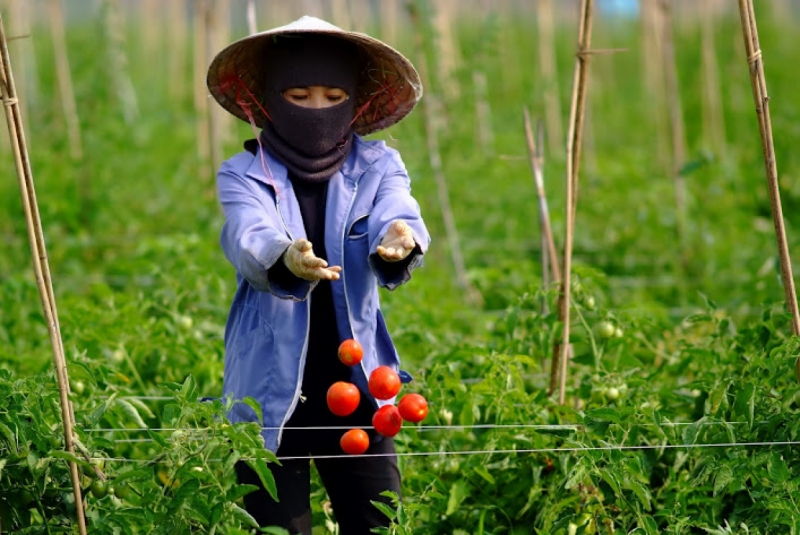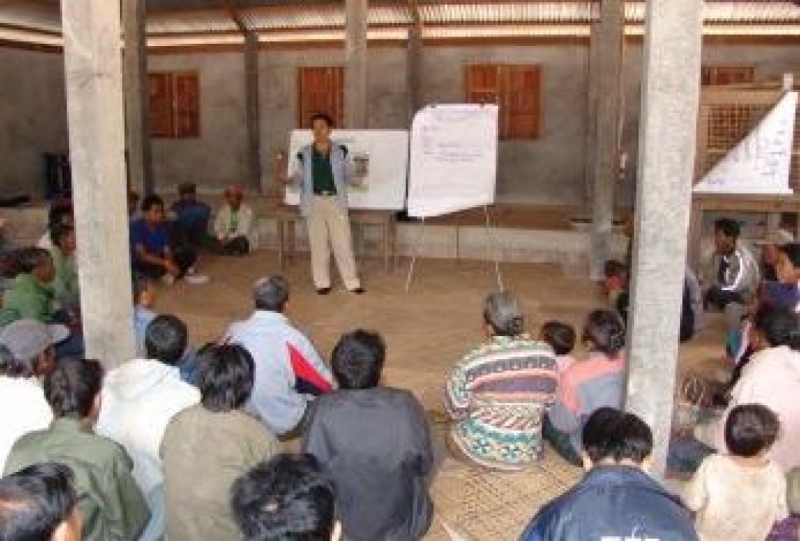




Extension for everyone.
This one-liner vision of the Laos Extension for Agriculture Project (LEAP) may be short but it perfectly captures the meaning of agriculture as a social activity. It involves us – the consumers – as much as those directly working to produce the food we eat.
Agriculture is first and foremost a labor-intensive activity with farmers toiling in the fields. But, it also involves other actors, such as researchers producing farming knowledge and extension workers bringing these knowledge down to the farmers so that ỷield will increase and livelihoods will improve. In fact, in many ways, extension is as integral an activity as the actual work in the fields, and as such, should involve other key groups not just the farmers and extension workers.
This is what the 13-year LEAP that spanned five phases has been about.
The value of a participatory, sustainable agricultural extension system
Lao PDR’s primarily agriculture-dependent population makes agricultural extension not just a priority but a need. A report from the then National Agricultural and Forestry Extension Service (NAFES) in 2005 noted that extension can address a number of important agricultural issues in the country including the limited access to appropriate agricultural technologies, lack of market information, and low organizational development among farmers.
Extension has always been traditionally viewed as training and/or technology transfer, and this is true for most countries in Southeast Asia, including Laos. In fact, most of the extension projects and initiatives in the country had been largely technology transfer and training programs designed to help farmers improve their production.
Yet, there was a felt need for a more pluralistic, decentralized extension system that will cater to the diverse needs of farmers in the country. There was also the challenge to redefine the meaning of “training” to emphasize also the value of “on-the-job” work and model farmers who will serve as leaders and knowledge-sharers in the community. Finally, just as a decentralized extension system must be adopted at the village-level, the NAFES also recognized the importance of institutionalizing extension at the national level to provide guidance.

Indeed, the Laos Extension Approach (LEA) may be considered one of the project’s most notable, significant achievements after its 13-year run as Mr. Souvanthong Namvong, Project Coordinator for the LEAP Phase 5 attests. “We have different extension projects from different organizations, using different models,” Mr. Namvong explained. “LEAP consolidated these different extension models into the Lao Extension Approach and the Agriculture Extension Strategies.”
The adoption by the Ministry of Agriculture and Forestry (MAF) of the LEA in 2005 meant reforming the way agricultural extension is to be viewed and carried out, and introducing a more inclusive, participatory and needs-based approach in working with farmers, especially smallholder ones.
Building capacities
But besides a concrete, physical document that lays down the country’s agricultural extension approach, LEAP’s other non-visible but equally notable achievement is the unparalleled capacities of farmers and extension workers alike that were built, strengthened, and enhanced.
Mr. Namvong explained that the project’s emphasis on knowledge and building the capacity of users in using agricultural knowledge is one of the other striking features of the project. He related that during the interviews for the impact survey for LEAP, farmers who were part of the project expressed how LEAP has introduced them to techniques to improve their production and livelihood. “LEAP focused on rice farmers, maize growers, and those engaged in poultry and piggery-raising. Many from the poultry group, for example, said that they used to have no idea how to raise chicken before, but because of the project, they have increased their income from the poultry they raise and have also improved the nutrition of their families.”
But in addition to the new technologies shared, the project has also shown that farmers have a key leadership role in the community, and they can become village extension workers themselves. The idea was to train farmers on the technologies, Mr. Namvong explained, and for them to share their experiences and knowledge with their fellow farmers. These farmer-leaders also served as key persons coordinating with the district agriculture staff.

The project’s gender focus also helped in reinforcing the role of women farmers and women extension workers. In a video of the lessons learned from the project, Ms. Champong Keodouangchan, extension staff at the District Agriculture and Forestry Office (DAFO) in Viengphoukha Luangnamtha Province, narrates that “male staff in the office recognize the important role of women staff.” She added that women extension workers are also involved in many activities and they can do more challenging works.
The building of capacities was not just limited to farmers and extension workers. The project’s support to the NAFES had also been instrumental in the development of the office into a department branch of the MAF, the Department of Agriculture Extension and Cooperatives (DAEC), explains Mr. Somxay Sisanon, Director-General of DAE.
Ways forward
The project may have already concluded in May 2014, but its ending has also brought in new and better ways to move forward with the country’s agricultural extension program. One of this is the Lao Upland Rural Advisory Service, according to Mr. Namvong. The project, supported by the Swiss Agency for Development Cooperation (SDC), the same organization that funded the LEAP, seeks to improve the capacity of service providers, link the service sectors to farmer groups and tap into market opportunities for smallholder farmers. The emphasis is on upland farmers, one of the most disadvantaged farmer groups because of infrastructural constraints that limit their linkage with the market in the lowlands and the cities. Mr. Namvong explained that the project integrates all the lessons learned from the LEAP and other opast extension projects of the country.
Taking off from the LEAP experience, he also added that future agricultural projects should carefully consider the length of implementation and the criteria for selecting project beneficiaries. According to him, one of his important realizations from the LEAP experience is that villages that have not been involved in past foreign-funded projects are more receptive and have higher participation rate. Villages and communities that have been involved in past projects tend to compare especially in terms of extra incentives offered for participation.
Also, a longer time frame for working with the villages is recommended in order to see how the support has truly benefited the community. In the LEAP experience, he explained, the project support in a village lasted only for at most 18 months, and such a short time frame does not adequately cover the support needed by the community.
Still, coming down from the success of the LEAP, hopes are high that the new project will bear the same fruits that its predecessor has borne. LEAP has shown the potentials that a participatory, inclusive and audience-centric undertaking can bring greater and bigger leaps in outcomes and the lives of people in the community.